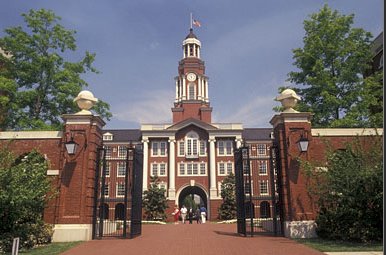The glory years for Channel One News were 1991-1997.
From Jim Metrock: Christopher Whittle, the marketing genius who created Channel One News, wanted ads in places where a person could not turn away. Placed-based advertising he called it. His goal was to force advertising onto people in a way that would demand extremely high ad rates. He chose two easy targets: sick people and schoolchildren.
Whittle created a magazine for doctor waiting rooms. His goal was to have the only magazine in the waiting room so patients would have to read it or nothing. Are people in a waiting room a captive audience? I believe so. Would you leave a waiting room and possibly miss the nurse calling you to an examining room? I wouldn’t either.
Our entire site is devoted to reporting on Channel One’s exploitation of schoolchildren. Whittle’s doctor’s office scam was a failure. His Channel One still lives on (Whittle sold it in 1994), but it is barely surviving.
Here is a news story about Channel One News from 1990 the year Whittle Commmunications began offering their marketing/news program to secondary schools. In 1990 everything was looking rosy for the youth marketers at Whittle and Channel One.
Whittle Gives Channel One a Sendoff
SKIP WOLLENBERG, Associated Press
NEW YORK (AP) _ Whittle Communications said today that more than 2,500 schools have signed up for its commercially sponsored Channel One news program for the classroom, which is scheduled to debut nationally on March 5.
Christopher Whittle, chairman of Knoxville, Tenn.-based media company, also said the company has sold $200 million in advertising for the first three years of the program, including about $65 million for the first year. That amounts to about two-thirds of the revenue that the company hopes to earn from ad sales.
At a news conference, Whittle said the daily show will be seen in 400 schools with 300,000 students on the launch date and that 1,000 schools should be showing it by the end of March.
Whittle said the number of schools will rise each week as the company installs television monitors and other equipment in the schools. He said was confident of reaching his goal of signing 7,000 to 8,000 schools with six million students by December.
Whittle, who was joined by former U.S. education secretary T.H. Bell, who heads a committee of educators advising Channel One, and others, said the service was ”the most significant educational idea that is going on right now.”
He said his company had awarded a $900,000 grant to the University of Michigan’s Institute for Social Research and the firm Interwest Applied Research to study Channel One’s ”contribiution to education over the next three years.”
And Whittle struck back at critics who say commercial-free programming being made available by the cable TV industry is more suitable for use in the classroom, saying a recent poll his company commissioned indicated few students are being exposed to the cable programming. He blamed lack of equipment, and said the Channel One system alone addresses that issue.
Channel One has generated considerable controversy because it would include two minutes of commercials within each 12-minute daily news program. Critics have said it is wrong to allow advertisers to pitch their products in ads to a captive audience of teenagers in the classroom.
Whittle has argued that teens are exposed to plenty of commercial messages every day and that the ads were a fair price to pay for getting the news show plus the Whittle-provided television monitors and other equipment needed to show the program.
State education officials in California and New York have banned Channel One from their public schools.
The state Board of Education in North Carolina recently prohibited schools there from signing up for the program, saying in part that it forces students to watch commercial advertising. That decision will not invalidate contracts that about 100 schools in the state already have signed to get Channel One, provided the show does not infringe on the 5 1/2 -hour school day, but the contracts cannot be renewed when they expire.
Channel One had originally set a goal of being in 1,000 schools at the launch date, and announced in November that 1,050 schools had signed up.
Equipment installation reportedly began in January.
In September, Whittle announced it had signed contracts for $51 million in advertising for the first year of the service, more than half of its first- year goal of $90 million in ad revenue.
Cynthia Kalish Samuels, a former planning producer for NBC’s ”Today Show” was named executive producer of the Channel One staff in October. Winter said she has assembled a news staff which has begun producing stories.


